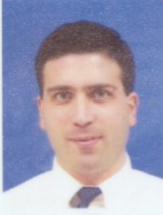|
The
Case Of The Mystery Note
Project URL: http://nrhs.org/Departments/Science/Forensic/
Document%20Analysis/index.htm
How
it works:
In this program, students process information and master the skills
needed for document analysis, which involves the ability to see the
entire picture. Students must have strong analytical skills and
be able to interpret the unknown information left behind by the
writer. Such things as paper and pen type, use of language, tone,
margins, and spacing of words and letters must be taken into
consideration when analyzing a letter. All the pieces of the puzzle
must fit together. Students also learn how to locate and collect
suspect samples without violating the Fourth Amendment and to properly
gather examples from a suspect in custody. The class analyzes the Jon
Benet ransom note in order to utilize a real-life situation, which
gives their work practical meaning. In order to achieve the above
objectives, a web site was created to simulate a real
investigation. As a final project, the students are given a scenario
and are asked to "process evidence" from the crime using the
web site. All the relevant information is accessible from the site. The
students work collaboratively, emulating the work of real
investigators, and they develop mental habits that last a lifetime.
Standards addressed:
Forensic Science integrates many different scientific disciplines
as well as current MST processes and skills. These include but are not
limited to generating, processing, and transferring information;
interdisciplinary problem solving; analysis inquiry and design;
and the application of scientific concepts/theories to address
real-life problems. This "investigation" reinforces these
processes, standards, and goals.
.
Materials used:
Required materials include computers with Internet connection, an LCD
projector, and a scanner for the teacher as well as a digital camera.
The
students:
The class is comprised of both seniors and juniors, 80% and 20%
respectively. They are mostly Regents students, many of whom take AP
courses. Forensic Science is an elective that for some students
completes their science requirement. The course provides a way to
teach many aspects of science in an alternative fashion. Regents Biology
or Chemistry are prerequisites for this course. Depending on the
student population, this program could be adapted for use with younger
students. Students with lower cognitive skills might need more
guidance.
Overall value:
In the past, The Case Of The Mystery Note has been
done mostly in the classroom with some "investigation"
throughout the school. In an attempt to maintain consistency and
focus, a web site was created. Copies of the suspect letter sent to the
class, as well as mug shots of all 12 suspects and their writing
samples are available to the student investigators. This helps to
facilitate the collaborative aspect of the project. After spending
three days in the computer lab as a class, students work on their own.
Many students present their findings to the class through
well-organized PowerPoint presentations utilizing actual documents
from the website. They cite all similarities and differences in their
evidence to expose the culprit. The response from the students has
been terrific and there was a recent article in The Huguenot Herald
(The New Rochelle High School newspaper) about the project.
Tips:
This program requires more than three class periods. Three days are
spent in the computer lab to help the students stay focused. Give the
students a week to complete the project out of class. The students
hand in a complete investigation packet at the end. E-mail for
more information.
|

About the teacher:
Scott Rubins has been teaching Forensic Science for five years. He
attained his Master's degree from Teachers College, Columbia
University. He has presented a session entitled "Teaching
Forensic Science The High School Way" at the National Science
Teachers Association National Convention and has received grants
totaling over $3000. He is a member of the North Eastern Association
of Forensic Scientists and the Dental Identification Team for the
Office of the Chief Medical Examiner in New York City, where he
has worked since September 11 with forensic dentists to identify
victims of the World Trade Center disaster.
E-mail:
sleuth6157@aol.com
Subject
Areas:
Science
Technology
Grade
Levels:
11-12
|